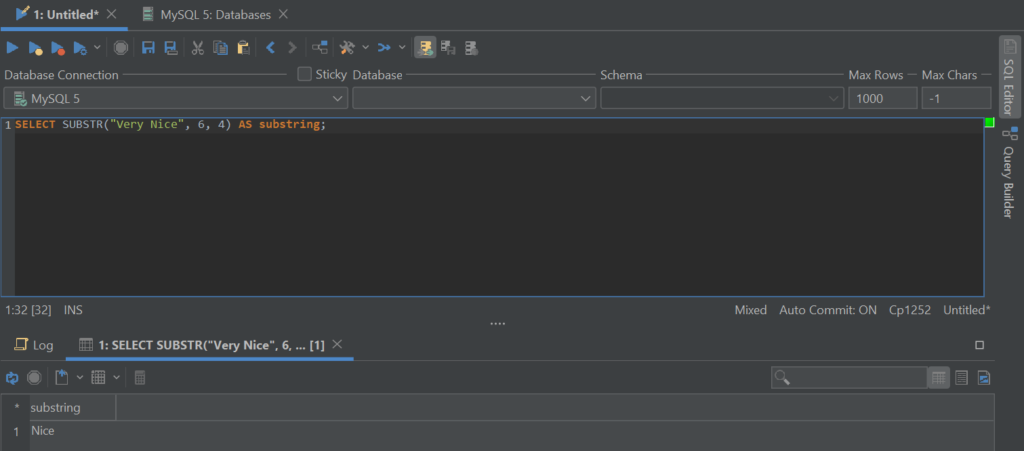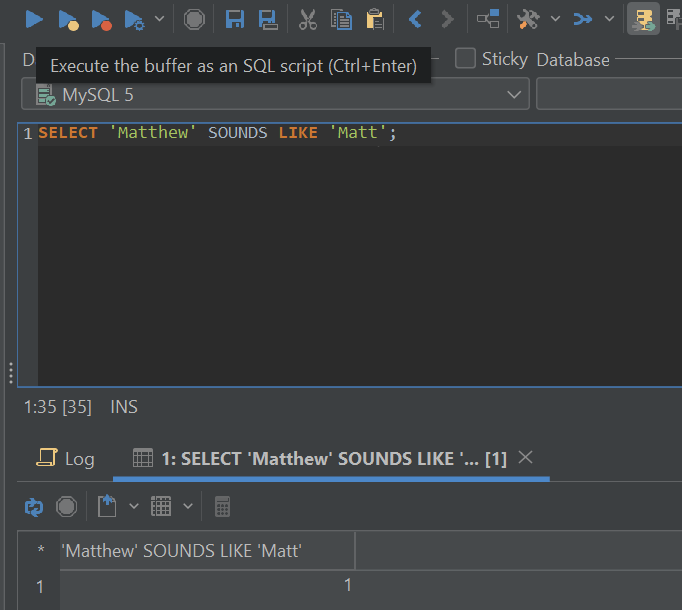Have you ever performed counting operations in any database management system? You know, comparing a column with another column, checking whether the value in one column is higher or lower than the value in another column, etc. Chances are you did – and if you did, you’ve already made use of operators helping you achieve your goal.
What are Operators in a DBMS?
As far as database management systems are concerned, operators are characters that help complete an operations of a varying nature – some operators can help compare numbers, some help modify data, some help search for it. Contrary to a popular belief, database operators do not only help in comparing operations relevant to numbers and this is one of their primary benefits – operators like % or * act as wildcards and help search for anything starting with or ending with a specific string, operators like := help assign values, operators like AND or && (they’re the same thing) help extend query functionality.
Some of the more interesting operators in MySQL include:
| Operator | Explanation |
|---|---|
| := | Anyone who includes : before a = can assign a value to a variable. This operator causes a variable on the left to take a value from the variable on the right. |
| ->> | Can be used to acquire the value of a JSON-based column – this operator will also remove any quotes. This operator is the same as two functions: JSON_UNQUOTEJSON_EXTRACT |
| BETWEEN X and Y | This operator is frequently used to check whether a value is between certain numbers (X and Y denote numbers.) |
| IS|IS NOT | Can be used to check whether values are or aren’t conforming to a value or a function that’s specified after the operator – frequently chosen to check whether a value IS NULL or IS NOT NULL. |
| RLIKE | Same as LIKE, just matching a regex expression. |
| SPACE | Can return a string consisting of the amount of specified characters – can also return NULL if NULL is specified like SELECT SPACE(NULL); |
Interesting and Rare Operators in MySQL
There are, of course, operators that are well known to everybody and these include LIKE, operators like =, !=, <=, and >=, and others, but since everybody knows how to use them, we’re not going to get into too much detail regarding them. What we do want to mention however are certain operators like SUBSTR (substring) or SOUNDS LIKE. These are some of the most interesting operators within MySQL as a whole, so they’re definitely worth further digging into.
SUBSTR, as its name suggests, is a substring operator – SOUNDS LIKE is rarely used and it sounds like nobody has even heard of it.
The substring operator can be used to extract a part of a string can is usually used like so:

In this case, we told MySQL to start at position 6 and extract 4 characters and that‘s exactly what it did – not some rocket science. Of course, there are some more interesting cases that this function may be employed in, including removing X amount of characters (this query removes the last 5 characters from a string):

One can also extract every character after a specific string and perform a couple of other things to assist in data analytics operations. Have a look through the data breach analysis page of the BreachDirectory data breach search engine for an example.
SOUNDS LIKE, on the other hand, is used even more rarely than SUBSTRING is – such an operator, as the name already suggests, can be used to know whether a string sounds like another string. For example, a query like so will help us evaluate whether Matthew sounds like Matt – MySQL will return „1“ it that‘s the case and „0“ if such a statement isn‘t true: pretty self-explanatory:

Such an operator is used very rarely, but can be useful to select a piece of a string that sounds like another piece of a string.
Other Operators
As far as MySQL is concerned, there are a bunch of other operators that can be used, for example:
There are also other operators that are used by MySQL ninjas – take a look through the comparison functions page in MySQL and find out yourself.
Operators can be combined with other operators for more power too and these combinations almost always require the use of a SELECT query. SELECT is frequently compared with almost any operator you can think of including equation operators, NULL and NOT NULL, LIKE, etc.
Summary
Operators are one of the most popular features in any database management system, and this fact is no different for MySQL either. They’re so mainstream that people who use them don’t even think about them twice – everyone knows they exist and both junior and senior MySQL ninjas are quick to make use of the power they present.
We hope you’ve enjoyed this blog and will consider using SQL clients like DbVisualizer (did we tell you that DbVisualizer offers a free trial to everyone who clicks here?) to ensure that your database is operating in the best way possible, and until next time!
FAQs
Where Can I See a List of Operators in MySQL?
A full list of MySQL operators can be seen here.
What Kind of Operators Are Used Most Frequently?
Some of the most popular operators include comparison operators, IS NULL and IS NOT NULL operators, also the LIKE operator, amongst others.
Can Using Certain Operators Break a Database?
No – operators can slow down certain functions if your database is not optimized enough, but nothing will be broken.


